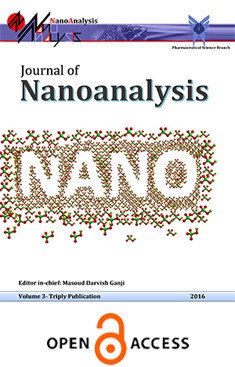-
-
List of Articles
-
Open Access Article
1 - Theoretical insights into the encapsulation of anticancer Oxaliplatin drug into single walled carbon nanotubes
Mahyar Rezvani Iran Ahmadnezhad Masoud Darvish Ganji Maria Fotukian -
Open Access Article
2 - Functionalization of multi-wall carbon nanotubes with Metformin derivatives and study of their antibacterial activities against E-Coli and S. aureus
Javad Azizian Malak Hekmati -
Open Access Article
3 - Molecular Simulation of Hydrogen Adsorption onto Single-Walled Carbon and Boron-Nitride Nano-Cones
Muhammad Shadman Lakmehsari Tahereh Kalateh -
Open Access Article
4 - Effect of Alumina Nanoparticles on the Enhancement of Shape Memory, Mechanical and Impact Properties of TPU/ABS blend
Zeinab Sohrabi Abdolhossein Fereidoon Farzaneh Memarian -
Open Access Article
5 - Adsorption and Optimization Removal of Co(tsPc)-4 from aqueous solution using Nanoalumina
Amir Vahid Majid Abdous Aliakbar MiranBeigi Shahnaz Nayeri -
Open Access Article
6 - Hollow Mesoporous Silica Nanoparticles (HMSNs) Synthesis and in vitro Evaluation of Cisplatin Delivery
Zohreh Jomeh Farsangi Seyed Mehdi Rezayat Ali Beitollahi Saeed Sarkar Mahmoudreza Jaafari Amir Amani
-
The rights to this website are owned by the Raimag Press Management System.
Copyright © 2021-2025







